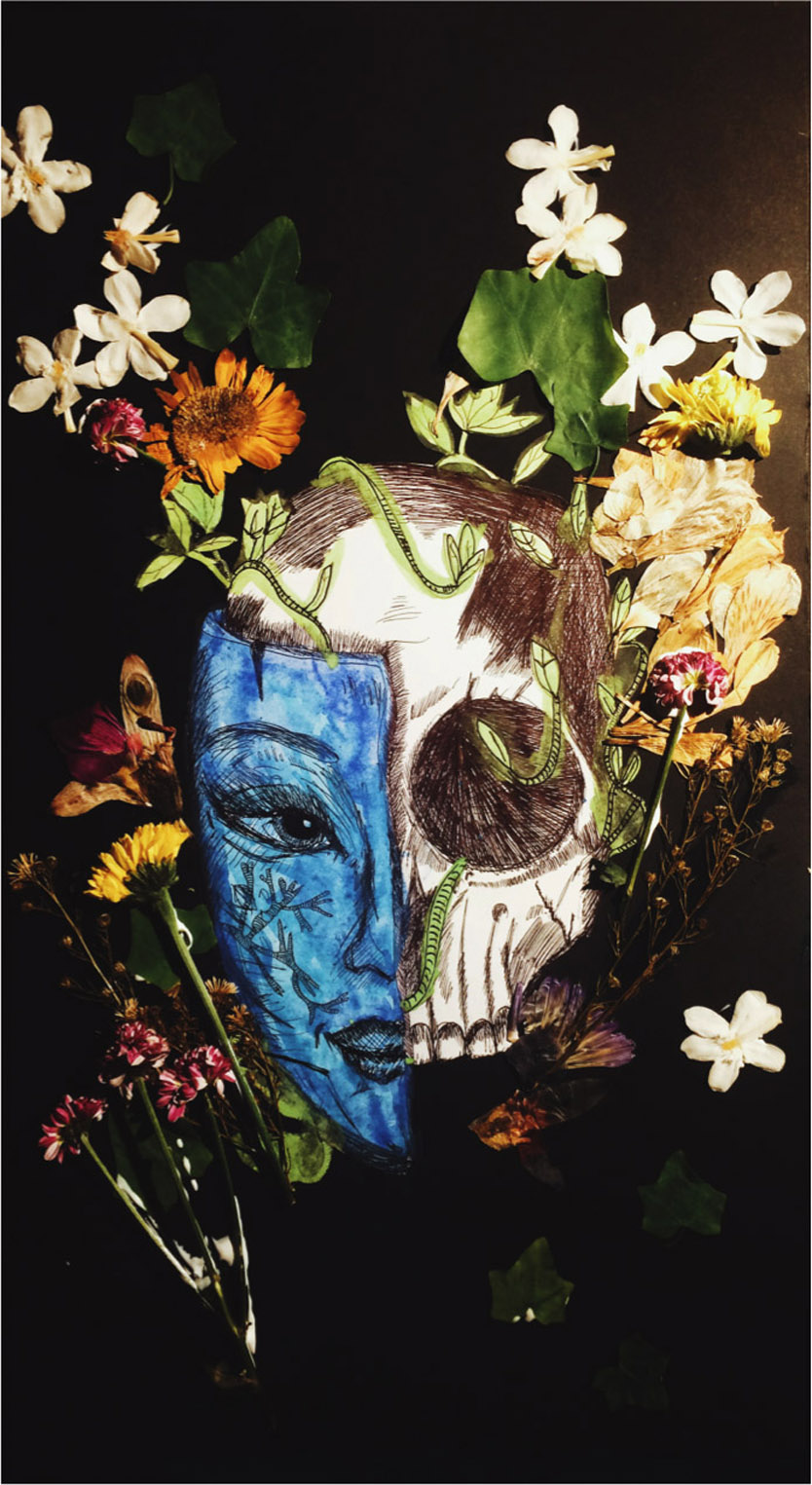The artwork I have created represents my mother’s experience in self-healing. I have drawn on ideas from the book, “Cure” by Jo Marchant to show the significance of the mind in a healing trajectory. My creative piece is a portrait of my mother. It presents half her face and half her skull. It depicts how close she was told she was to death, but it also shows that though death (her skull) seemed so close, she refused to let it consume her. The idea of death in my work is juxtaposed with the numerous vines developing from within her. The idea of nature wrapping her up in its protective power is what I aimed to portray. The leaves are covering her physical body and her skull as well, representing her inner self and so her mind. There are different flowers stemming from the vines, showing how different natural therapies were used in her healing process. The jasmine flower symbolises her offering at the Buddhist temple and embracing spirituality. I have used real flowers to symbolize the authenticity of nature and the fact that it has existed before our time and will last beyond it. Her face is painted in blue to emphasize the “blue meditation” she practiced, nourishing her positivity and building resilience. Her face has a subtle smile to show that she came to be at peace with her condition and her healing process affecting her emotional and mental state, improving her mood and wellbeing as well as tending to her physical ailment of pemphigus vulgaris. I specifically chose a black and white color palate because often, conventional medicine regards conditions as black and white. For example; if you have a headache take paracetamol, if you have a fever take ibuprofen. It often does not look beyond a symptom, whereas naturalistic healing approaches can provide different hues of color and different options to a patient, and look past a condition to balance the body, mind and soul.
My mother, like many patients, yearned for a more personalized healing process where her ailment was treated holistically, not just symptomatically. Her journey to recovery brings to light the importance of the effect of the mind on the body and the benefit that reverting to nature for healing can have. My mother’s experience is just that of one person and many may have undergone conventional treatment for pemphigus vulgaris and managed it without complaint.
Although Western medicine bases itself on hard evidence and differentiates between the workings of the mind and the body, new theories brought forward support the importance of the body’s own self-healing mechanisms and the importance of reconnecting with nature for disease treatment. I feel it is the duty of new generations of medical practitioners to bring the body and the mind back together. Medical practitioners are qualified and best equipped to offer treatment. I feel that we should be trained in such practices and even recommend these techniques to patients, unless new studies state otherwise.

A beautiful peace of artwork with deep underlying meaning – very thought provoking about the alternatives to western medicine that can be used in self recovery.
I love this artwork for the way it manages to convey different aspects of the human condition using symbolism, creating a collage that evokes inner strength and resilience. It reflects well on aspects of medicine often rejected in Western practice and emphasizes the connection between the body and the soul. Particularly, I admire the use of blue to represent meditation, which causes the face to radiate a serene calm in the face of adversity. The integration of nature using real flowers is powerful, and the artist demonstrates the strength of spiritual awareness and natural therapy for her mother. I agree that medicine has become too black-and-white and over-medicalized. I believe that when peer review fails and evidence-based medicine fails to persuade a practitioner, art pieces like this, which present personal cases, have a better chance of swaying one’s point of view.